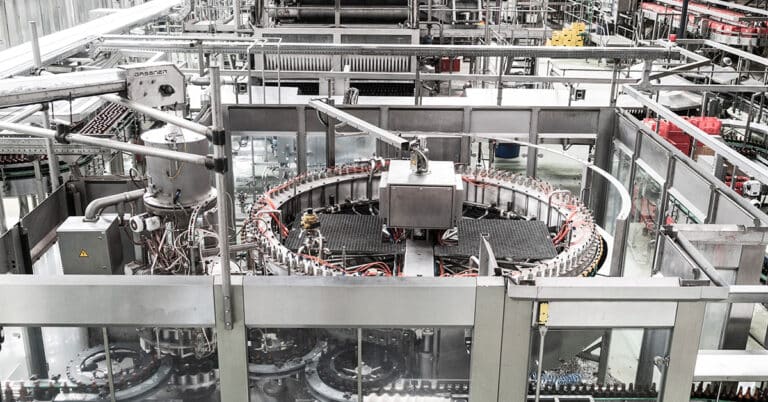Green manufacturing and sustainability considerations have shifted from “nice-to-haves” to critical, strategic imperatives. A growing number of manufacturers are committing to net zero manufacturing — a transformation driven by new compliance mandates, customer expectations, and the financial upside of operational efficiency.
Today, factors influencing this shift include customer requirements — particularly for public sector and enterprise contracts that demand sustainability metrics — and the drive for process and energy efficiency, which often align with cost savings through optimized uptime, energy management, supply chain performance, and resource reuse. Additionally, reputation and regulatory compliance play a major role, with carbon-related disclosures, like the SEC climate disclosure rules, becoming mandatory in some jurisdictions.
At its core, net zero manufacturing helps balance economic competitiveness with environmental responsibility. Investments in industrial energy efficiency and sustainable practices deliver measurable ROI — from lower energy costs to stronger supply chain performance and enhanced brand equity.
What is net zero manufacturing?
Net zero manufacturing — sometimes referred to as carbon neutrality in operations — means an organization is removing as much carbon from the atmosphere as it emits. The path to achieving this requires an intentional focus on carbon emissions reduction and responsible sourcing, production, and logistics.
To fully understand net zero, it’s important to distinguish it from related concepts:
- Net zero: No net increase in greenhouse gas (GHG) emissions, often measured across Scopes 1, 2, and 3.
- Carbon neutrality: Emissions may still occur, but they are offset by reductions elsewhere.
- Sustainability: A broader concept encompassing environmental, social, and economic balance.
Greenhouse gas emissions in manufacturing are categorized into three scopes that help define a company’s carbon footprint:
- Scope 1 emissions are direct: From fuel combustion in furnaces or company-owned vehicles.
- Scope 2 emissions are indirect: From purchased energy like electricity, heating, or cooling.
- Scope 3 includes all other indirect sources throughout the value chain: From the production of raw material, third-party logistics, commuting, and even product end-of-life.
In the context of the manufacturing sector, carbon emissions stem from a variety of sources. High-energy equipment and HVAC systems consume large amounts of energy, often from fossil fuels. Material inputs — like aluminum or plastic — may carry high embodied carbon. Logistics, warehousing, and packaging also contribute to the total footprint.
Achieving net zero emissions requires reducing carbon at each of these stages while managing accountability across the manufacturing supply chain.
The road toward a net zero facility
Manufacturers across industries are implementing innovative solutions and participating in global efforts like the Net Zero Industry Act and the World Economic Forum’s Clean Energy Initiative to reduce manufacturing emissions.
Automotive manufacturers are pushing forward with clean technology innovation — electrifying fleets, streamlining production, and launching carbon audits. The aerospace sector is investing in green hydrogen and low-emission composite materials. Meanwhile, food processors are adopting heat recovery systems and converting to renewable energy like wind and solar. Many companies are also achieving ISO 50001 certification, resulting in up to 30% reductions in energy use.
According to a 2024 World Economic Forum report, over 61% of global manufacturers have set carbon reduction goals, and 35% have formal net zero targets. Key forces driving these changes include:
- Rising ESG investor pressure and SEC regulations
- EU carbon border adjustment tariffs
- Procurement and supply chain mandates from major OEMs and corporations
How to transition to carbon neutral manufacturing
Every facility will take a unique approach, but successful transitions follow several key stages:
Assess Net Zero Readiness
Start by performing energy audits and ESG benchmarking. Use cross-functional teams — operations, facilities, finance, and sustainability — to identify high-impact areas. Avoid siloed initiatives; map emissions across logistics, equipment, HVAC, and suppliers to pinpoint reduction opportunities with maximum ROI.
Implement Sustainable Manufacturing Technology
Adopting smart systems enables more informed decision-making. For example:
- Predictive maintenance solutions reduce unnecessary energy usage by servicing assets only when needed
- Condition monitoring sensors boost uptime and efficiency
- Real-time performance analytics reduce downtime and waste
Review Long-Term Investment
While net zero initiatives require capital outlay, the benefits are substantial:
- Lower energy costs
- Reduced material waste
- Improved competitiveness in sustainability-focused bids
- Access to tax incentives, green financing programs, and government support
Deployment and Scaling
Begin with pilot deployments and iterate based on results. Use KPI dashboards and benchmarking systems to track emissions reduction. Implement internal training and change management initiatives to embed sustainability across your workforce.
How maintenance supports net zero goals
Maintenance plays a direct role in reducing a facility’s carbon footprint. Proactive strategies help minimize emissions, maximize uptime, and prevent unnecessary equipment wear.
- Preventive maintenance programs help facilities avoid inefficiencies that waste energy
- Predictive systems prevent over-maintenance and identify real servicing needs
- Real-time monitoring catches performance dips that might cause co₂ emissions spikes
- MRO optimization reduces shipping-related emissions from excessive or rushed parts orders
- Reliable assets prevent overproduction or scrap-related waste
In short, maintenance is a pillar of any successful net zero manufacturing initiative.
What are the barriers to net zero — and how to overcome them?
Despite clear benefits, manufacturers still face significant challenges.
High upfront investments can delay technology adoption. However, rebates, green financing, and operational savings often cover costs over time. A lack of internal expertise is another hurdle — one that can be resolved through partnerships with consultants or tech providers.
The supply chain presents further complications. Fragmented visibility and inconsistent standards can be mitigated with auditing, preferred vendor programs, and regional sourcing. Lastly, siloed decision-making slows progress. Collaborative planning between operations, procurement, and sustainability leaders ensures alignment and accelerates results.
By recognizing and proactively planning for these challenges, manufacturers can confidently continue their path to net zero.
Take a step towards net zero manufacturing today
These strategies provide the foundation to implement, optimize, and scale net zero manufacturing. From real-time insights to renewable energy adoption and smarter maintenance, the journey is multifaceted — but increasingly essential.
Beyond cost savings, sustainability in production is a requirement in today’s regulatory and procurement landscape. As RFQs and contracts demand proof of sustainability, your competitive advantage lies in the ability to confidently say “yes.”






